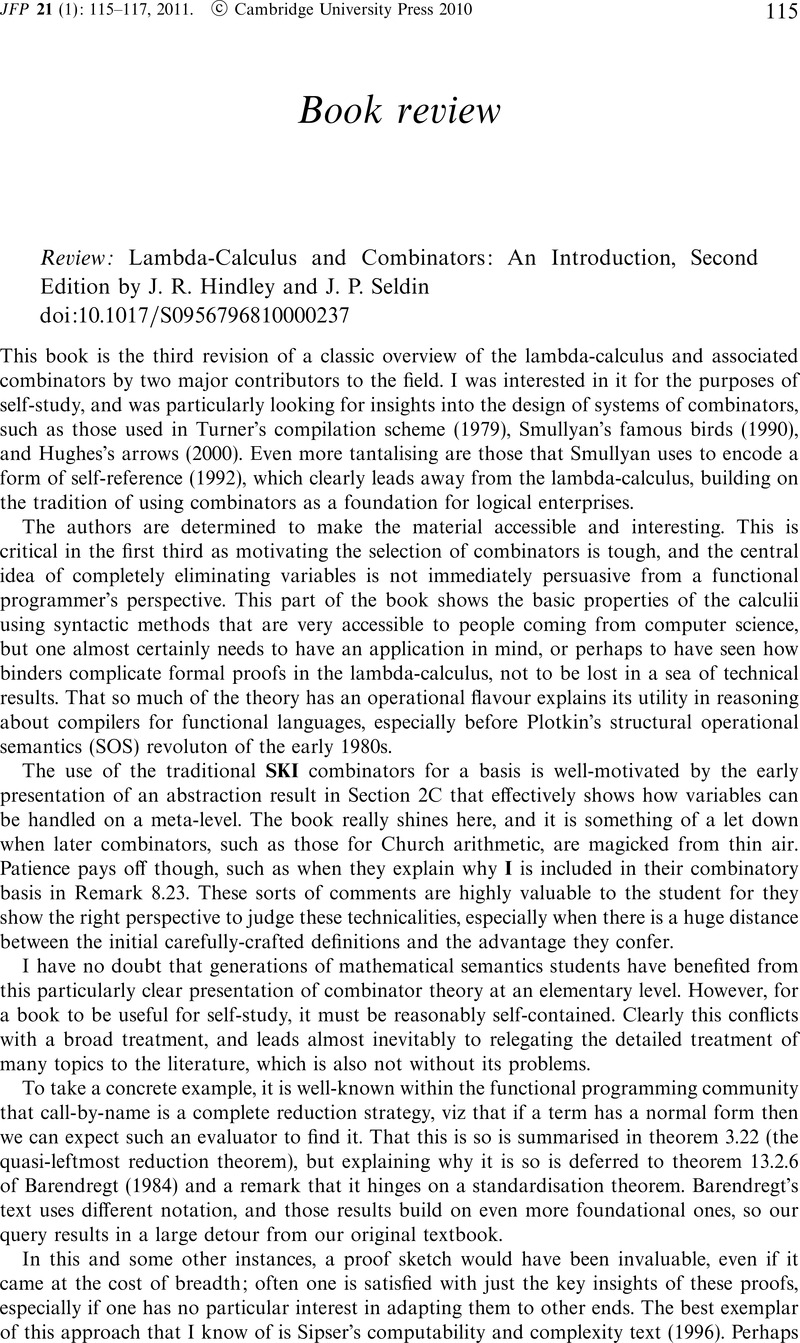No CrossRef data available.
Article contents
Review: Lambda-Calculus and Combinators: An Introduction, Second Edition by J. R. Hindley and J. P. Seldin
Review products
Review: Lambda-Calculus and Combinators: An Introduction, Second Edition by J. R. Hindley and J. P. Seldin
Published online by Cambridge University Press: 29 September 2010
Abstract
An abstract is not available for this content so a preview has been provided. As you have access to this content, a full PDF is available via the ‘Save PDF’ action button.

- Type
- Book Review
- Information
- Copyright
- Copyright © Cambridge University Press 2010
References
Barendregt, H. P. (1973) Review of Introduction to Combinatory Logic by J. R. Hindley, B. Lercher and J. P. Seldin. J. Symb. Logic, 38 (3): 518.CrossRefGoogle Scholar
Barendregt, H. P. (1984) The Lambda Calculus: Its Syntax and Semantics (revised edition). North-Holland.Google Scholar
Bos, R., & Hemerik, C. (1988) An Introduction to the Category-Theoretic Solution of Recursive Domain Equations. Tech. Rep. Computing Science Notes No. 88-15. Technische Universiteit Eindhoven.Google Scholar
Hughes, J. (2000) Generalising Monads to Arrows. Sci. Comput. Program., 37: 67–111.CrossRefGoogle Scholar
Krivine, J. L. (1988) Review of Introduction to Combinators and Lambda-Calculus by J. R. Hindley and J. P. Seldin, J. Symb. Log., 53 (3): 985–986.CrossRefGoogle Scholar
Sipser, M. (1996) Introduction to the Theory of Computation. International Thomson Publishing.CrossRefGoogle Scholar
Smullyan, R. M. (1992) Satan, Cantor, And Infinity and Other Mind-Boggling Puzzles. Knopf.Google Scholar
Turner, D. A. (1979) A new implementation technique for applicative languages. Softw. – Prac. Exp., 9 (1): 31–49.Google Scholar
van Raamsdonk, F. (2009) Review of Lambda-Calculus and Combinators, An Introduction, Second Edition, J. R. Hindley and J. P. Seldin. Theory Prac.Logic Program., 9 (2): 239–243.Google Scholar



Discussions
No Discussions have been published for this article.